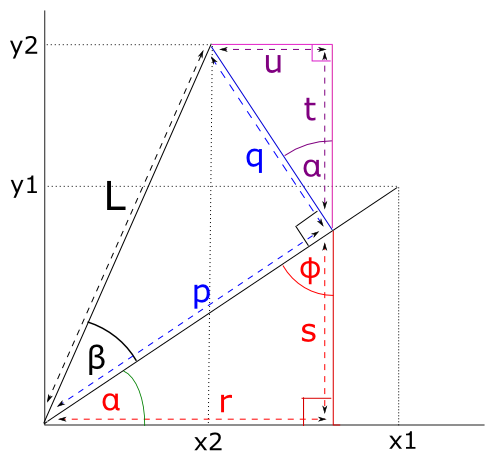Formula for rotating a vector in 2D¶
Let’s say we have a point \((x_1, y_1)\). The point also defines the vector \((x_1, y_1)\).
We rotate this vector anticlockwise around the origin by \(\beta\) degrees.
The rotated vector has coordinates \((x_2, y_2)\).
Can we get the coordintes of \((x_2, y_2)\) given \((x_1, y_1)\) and \(\beta\)?

\(L\) is the length of the vectors \((x_1, y_1)\) and \((x_2, y_2)\) : \(L = \|(x_1, y_1)\| = \|(x_2, y_2)\|\).
\(\alpha\) is the angle between the x axis and \((x_1, y_1)\).
We can see from the picture that:
We are going to use some basic trigonometry to get the lengths of \(r, u, t, s\).
Because the angles in a triangle sum to 180 degrees, \(\phi\) on the picture is \(90 - \alpha\) and therefore the angle between lines \(q, t\) is also \(\alpha\).
Remembering the definitions of \(\cos\) and \(\sin\):
Thus:
So:
Luckily this is the same result as wikipedia on rotation matrices.